Michigan Native Plants: 14 Amazing Landscaping Choices


Are you looking for plants that are native to the state of Michigan? We explain what it means to be a Michigan native plant and share a short list of some examples to get you started!
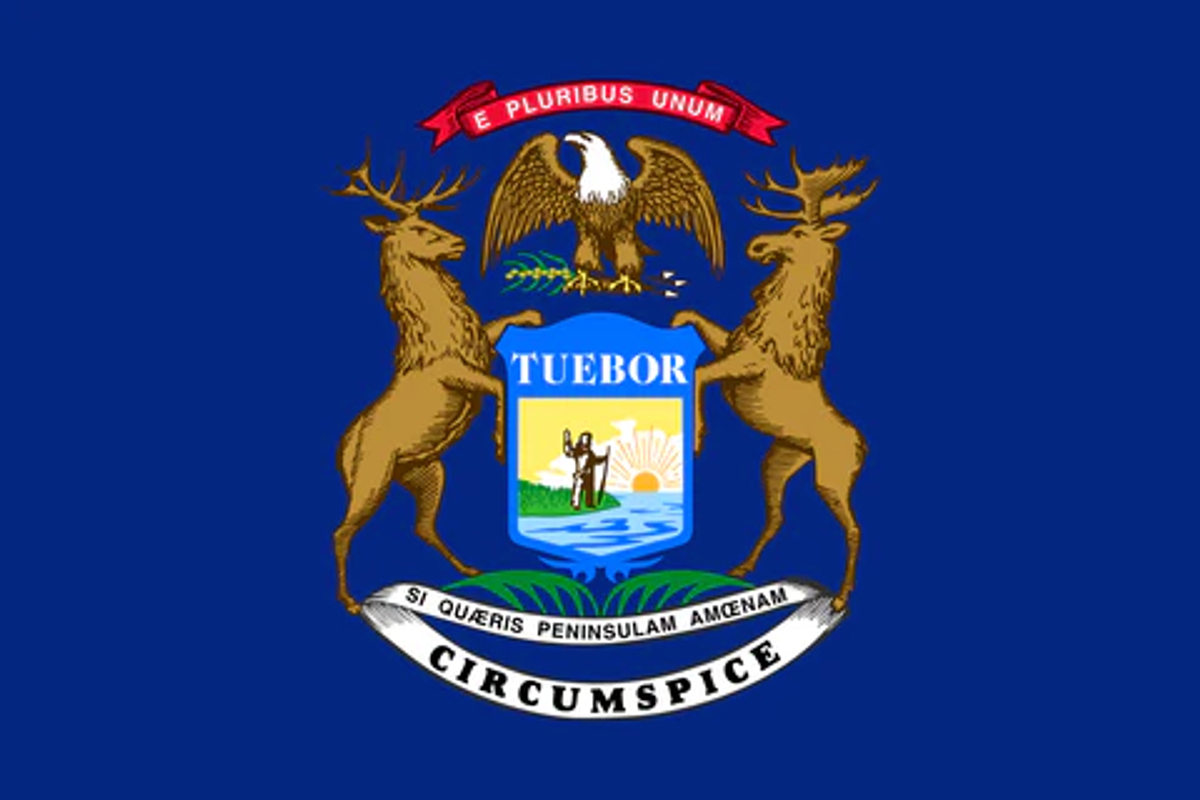
If you live in Michigan, you may already be familiar with a few native Michigan plants, including native trees such as the majestic White Pine (Pinus strobus), gorgeous Sugar Maple (Acer saccharum), and ubiquitous American Hazelnut (Corylus americana); or herbaceous perennials like Michigan's state wildflower, the Dwarf Lake Iris (Iris lacustris). But would you believe that these are just four of hundreds of native Michigan plants? In this post, I'll walk you through a collection of 14 Michigan native perennials that are both low maintenance additions to your landscape or garden and high impact supports for your local ecosystem. But first, what are native plants?
Michigan Native Plants
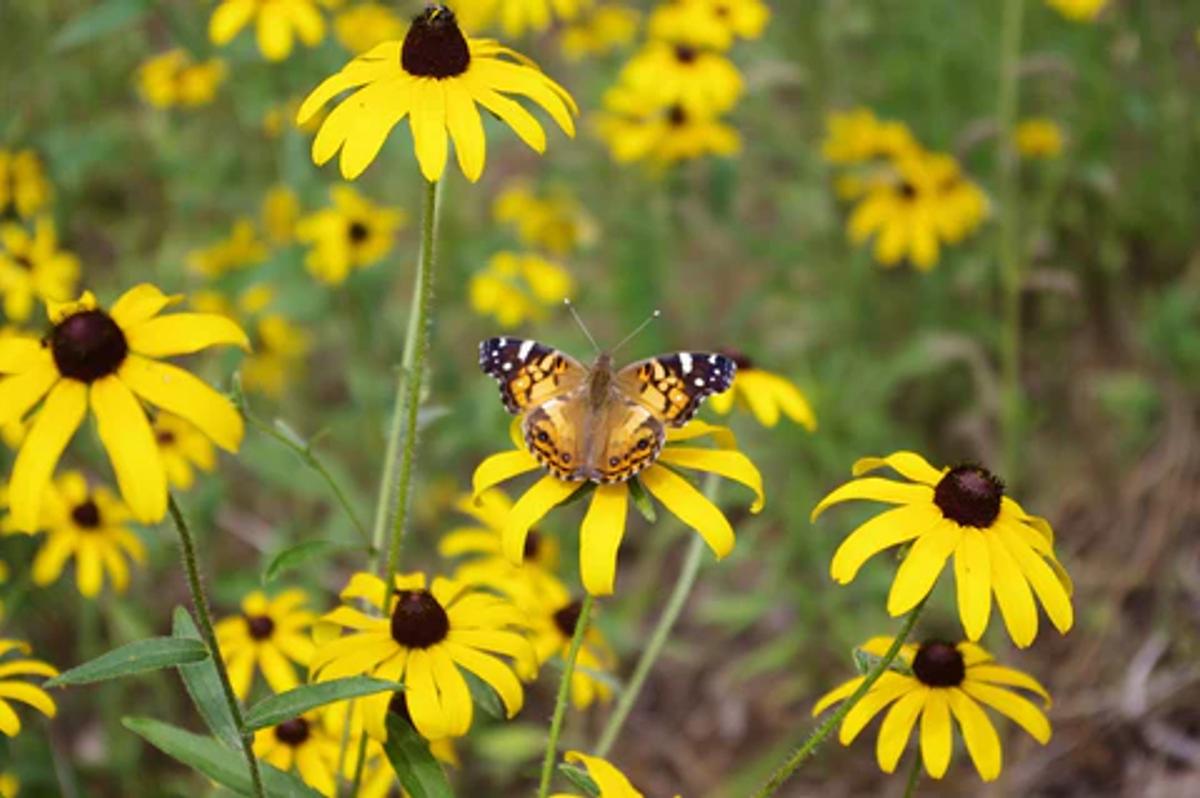
Put simply, plants native to Michigan are those species that have grown in the area we now call Michigan for many thousands of years. This means that the native plants we interact with today - like those seen at native plant sales in your area - are the descendants of ancestral species that were growing in and supporting Michigan ecosystems long before the arrival of European colonists. In that huge amount of time, these species have become uniquely well-adapted to thrive in Michigan while providing genuine wildlife habitat. They also happen to be amazing plants for the yard, requiring far less maintenance than lawns or other ornamental plants, and improving the look and ecological value of any garden or landscape.

Why are native plants important?

There has been an ongoing and incredible loss of animal life worldwide over the past 150 years. This is a tragedy that has affected almost every major group of wildlife, including the many bees, butterflies, birds, and other beneficial pollinators that allow our natural world to function. A leading driver of this crash is land mismanagement: as humans, we've spent far too long removing the native trees and herbaceous perennial plants our local ecosystems need to function well and replacing them with other plants that do little or nothing to help.

By contrast, all the native plants are specifically adapted to provide food and shelter for many beneficial insects, birds, and other wildlife, while simultaneously sequestering more carbon and cycling more nutrients back into the soil. Many species of native plants can survive in poor soils and are drought tolerant and deer resistant once established. Simply by adding native plants to our garden, rain gardens, cottage gardens, and other flower beds, we can directly help to repair soils and reestablish healthy habitat.
Michigan Native Plants for Landscaping
Below, I share a handful of Michigan native plants, and split them into three major categories: Full Sun, Partial Shade, and Full Shade. Each one of these native species will support many beneficial insects and most can be found, along with other Michigan native plants, in My Home Park's pre-designed gardens for Michigan.
Native Plants for Full Sun
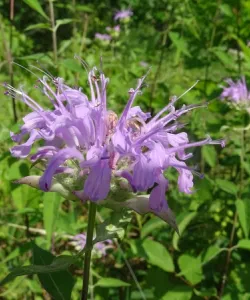
You may already be familiar with Bee Balm (also called Bergamot), which is one of many herbaceous perennials native to Michigan and many other parts of North America. This is an incredibly adaptable plant that will tolerate most soil types (except very wet soil) and will thrive so long as it gets enough sun. Its lovely lavender flowers will attract butterflies, bees, and even hummingbirds during its mid summer bloom. Easy to maintain, this plant requires only rare division to keep in one place.

Wild yarrow is a highly adaptable addition to practically any yard in the country. Its dark green foliage and fragrant white flowers will attract butterflies, bees, and other pollinators to your garden. Although happiest in full sun, it will tolerate light shade. Expect first blooms sometime in early summer.

Native to almost every state east of the Rockies, Butterfly Weed is a ubiquitous and amazing herbaceous perennial. Its orange showy flowers are a welcome addition to native plant gardens with tons of sun and very dry soil. Also called Orange Milkweed, this early summer bloomer is a critical host plant for both the monarch and queen butterflies.
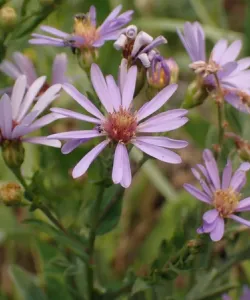
Another awesome herbaceous perennial, Smooth Aster are happiest in full sun and dry soil. Once established, its eruption of purple flowers will invigorate your garden or landscape when it blooms from late summer to early fall and beyond. This plant is a host for the Pearl Crescent butterfly (Phyciodes tharos) and Wavy-Lined Emerald moth (Synchlora aerata).

Purple Coneflower is one of a handful of native plants to become so popular as to likely be sold at your local nursery. This is an astoundingly important plant that supports tons of pollinators with its nectar and pollen and will attract birds to its seed-laden flower heads in the fall. Even hummingbirds are drawn to its purple flowers for a quick meal! Happiest in full sun with slightly moist soil. A wonderful addition to any garden or landscaping project that blooms in mid to late summer.
Native Plants for Partial Shade
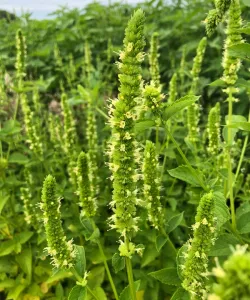
A fast-growing and strong-stemmed herbaceous perennial in the mint family, Yellow Giant Hyssop truly lives up to its name, reaching four to six feet in height. Its greenish and pale yellow flowers will draw in and support heaps of pollinators while it blooms from mid summer to early fall. This is a beautiful and dramatic addition to even a medium-sized garden or landscape.
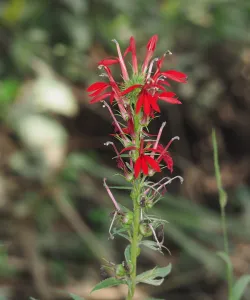
Happy in partial sun and full sun, Cardinal Flowers bloom an incredible deep crimson red in late summer. It's said this plant takes its name from the deep red of the Roman Catholic Cardinal's robe. A wetland plant by nature, Cardinal Flowers are a great landscaping choice to yards with moist soils or even wet soil by a pond or other body of water.
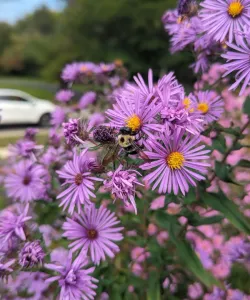
A true stunner in any landscape or garden, New England Aster's profusion of purple flowers are a joy from summer into fall. While monarch caterpillars do not feed on this plant, the adults will absolutely fuel up on its nectar before beginning their annual migration to Mexico. This stunner will thrive in moist soil and full sun to light shade. If it's height (up to 6 feet!) ever threatens to overwhelm, stems can be cut back by mid-July to maintain appearances.

One of the more popular native Michigan plants, Black-Eyed Susan are wonderfully showy and easy to grow in dry to medium soils. Its glorious yellow flowers will invigorate your landscape from early summer on with extended blooms that can last into September. Like other coneflowers, Black-Eyed Susans support myriad pollinators and seed-eating songbirds alike.

A perfect choice for the partial shade garden, Blue-Stemmed Goldenrod (also called Wreath Goldenrod) is a well-behaved and ecologically important native species. Its yellow flowers decorate long arching stems that compliment many other landscaping features.

Native Plants for Full Shade

Ostrich Ferns grow to between three and five feet in height, adding texture and moisture retention for full and partial shade landscaping projects. Its emerging fiddlehead shoots are edible if cooked - a perfect way to keep denser colonies in check if desired!
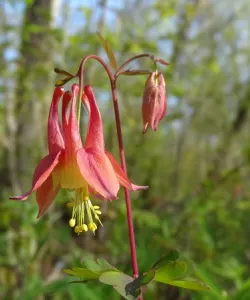
Wild Columbine's yellow and red flowers will attract hummingbirds and other long-tongued pollinators in late spring. This is a highly adaptable plant that will do well in full sun, part shade, and full shade yards alike.
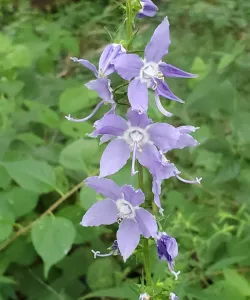
As its name suggests, Tall Bellflower boasts gorgeous blue tubular flowers set on tall attractive spikes - an easy way to enliven part shade and full shade gardens. A self-sowing biennial, Tall Bellflower will attract butterflies and bees alongside hummingbirds.
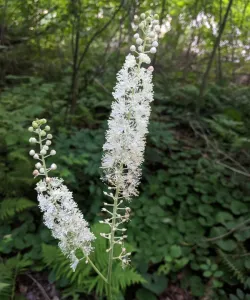
One of the more interesting native Michigan plants, Black Cohosh is a dramatic addition to any full or part shade landscape. Fragrant white flowers shoot up along attractive spikes, pulling in as many butterflies and bees as they do flies, beetles and other beneficial insect pollinators. Black Cohosh blooms anywhere from late spring to fall, but its rich, dark green foliage will add great texture for the whole season.
What you can do today
If you live in Michigan, My Home Park has pre-designed gardens that bring together multiple species of Michigan native plants produced by expert, organic growers in the Great Lakes region. These gardens are designed to bloom from early spring to early fall, beautifying your landscape while supporting wildlife. Check out our catalog for Michigan or explore our offerings for other states in the Great Lakes region to get started today!
Share this article


